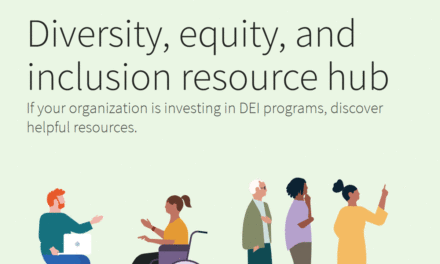The ongoing feud between former President Donald Trump and Harvard University has ignited a heated debate on college campuses, particularly among students who have differing views on the issue of discrimination in admissions. The controversy centers around Trump’s criticism of Harvard’s affirmative action policies, which he argues favor certain demographic groups over others at the expense of merit-based admissions.
Trump’s position on college admissions has been a topic of conversation since he took office. Recently, he has ramped up his rhetoric against what he perceives as discriminatory practices employed by elite universities like Harvard. His accusations have resonated with a significant portion of the American public who believe that merit should be the foremost consideration in the college admissions process.
Supporters of Trump’s position contend that affirmative action creates an uneven playing field, where students with lower academic credentials may gain admission over more qualified candidates simply due to their race or socioeconomic background. This viewpoint is fueled by a wide array of statistics that suggest that a disproportionate number of seats are awarded to applicants based on non-academic factors.
On the other hand, proponents of affirmative action argue that these policies are essential for fostering diversity and inclusivity within higher education. They believe that a more diverse student body enhances the educational experience for all students, preparing them to thrive in an increasingly global society. Advocates assert that affirmative action helps to rectify historical injustices and provides opportunities for underrepresented groups who have been marginalized in academic settings.
This clash of ideologies has created a palpable atmosphere of tension on campuses as students engage in discussions about the implications of admissions policies. Many students find themselves torn between the principles of equity and equality, navigating the complexities of an issue that has far-reaching ramifications for their futures and those of their peers.
At Harvard, where the debate is particularly charged, students have taken to social media to voice their opinions. Platforms like Twitter and Instagram have become arenas for the exchange of ideas, often characterized by passionate, and at times, hostile exchanges. Students organizing discussions, panels, and even protests have worked hard to engage their peers and foster a better understanding of the underlying issues at play.
The legal backdrop to this ongoing dispute cannot be ignored. The Supreme Court of the United States is set to hear several cases that challenge the constitutionality of affirmative action policies. This has led to heightened anxieties amongst students, particularly those from historically marginalized groups, who fear that a ruling against affirmative action could curtail their access to elite colleges and universities.
Students of color, in particular, have expressed concern about how a potential shift away from affirmative action would impact their enrollment and success rates at prestigious institutions. Some argue that without these supportive measures in place, the barriers to entry will only grow steeper, undermining the progress made in diversifying educational environments.
The fear of losing protective measures has also prompted students and organizations at Harvard to proactively rally against the framing of the admissions debate as a zero-sum game. They contend that it is possible to create a system that values both merit and diversity without sacrificing one for the other. Debates on this notion are not only academic; they are deeply personal, and students share their own stories to underscore the importance of diverse student representation.
Critics of both Trump and the status quo in college admissions have argued that the discussion often oversimplifies the multidimensional criteria that universities use when making admissions decisions. They point out that performance in standardized tests, GPA, extra-curriculars, personal essays, and recommendation letters all contribute to an applicant’s overall profile. Admissions decisions are far more nuanced than a binary decision based solely on race or socioeconomic status.
In response to these complexities, Harvard students have developed nuanced arguments to articulate their stance in the wider debate. Many have pointed out that while progress has been made, systemic inequalities still exist in the education system, influencing the preparation students receive long before they even think about applying to college. Disproportionate funding for schools in affluent areas, racial bias in disciplinary measures, and unequal access to advanced coursework all contribute to a disparate playing ground.
As the discussions continue, students have sought to engage faculty, alumni, and institutional leaders in a dialogue that includes all perspectives. The emphasis has been on moving beyond mere confrontation into a phase of constructive dialogue, where diverse opinions can coexist even in disagreement. Initiatives on campus have fostered an environment where all voices can be heard while encouraging critical thinking and respect for one another’s experiences and viewpoints.
Amidst these discussions, there have been calls for broader reforms in education itself, advocating for systemic changes that extend far beyond college admissions. Many students argue for increased support for K-12 education across the board, particularly in underserved communities. This could help alleviate disparities in educational access and quality, ultimately leading to a more equitable pool of applicants by the time students apply to college.
The conversations at Harvard are echoed throughout various universities across the United States, demonstrating that the clash over college admissions is more than just a debate between Trump and Harvard; it is reflective of a larger societal dialogue about equity, justice, and the values that underpin America’s education system. For students, engaging in this dialogue is crucial as they prepare to navigate a world that is intricately connected to issues of identity and access.
The need for nuance in conversations about discrimination in admissions is more critical than ever. As students grapple with their beliefs and share their stories, it’s clear that this issue will not simply fade into the background. The implications of decisions made at the intersection of policy and identity will continue to shape the landscape of higher education in the U.S., influencing generations to come.
In conclusion, as the tension continues to mount over Trump’s confrontation with Harvard regarding college admissions, it is equally important to focus on the ramifications this has on students throughout the nation. As they navigate the complexities of admissions, their voices in the discussion will play a vital role in shaping policies that either reinforce or dismantle the barriers to education and opportunity. Now more than ever, universities, policymakers, and students must work together to create a landscape that is not only equitable but truly reflective of the diverse society that they serve.































